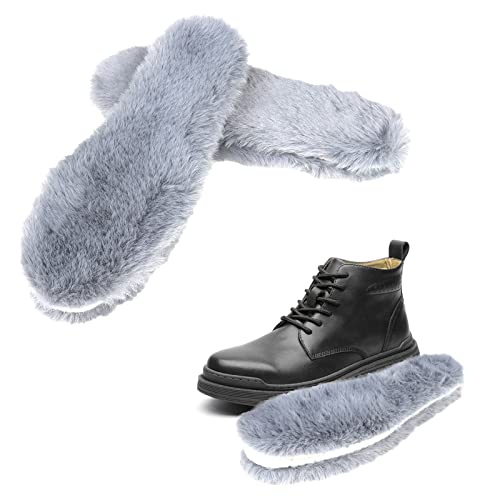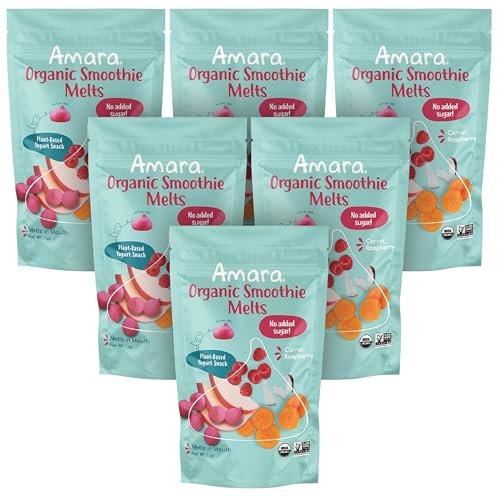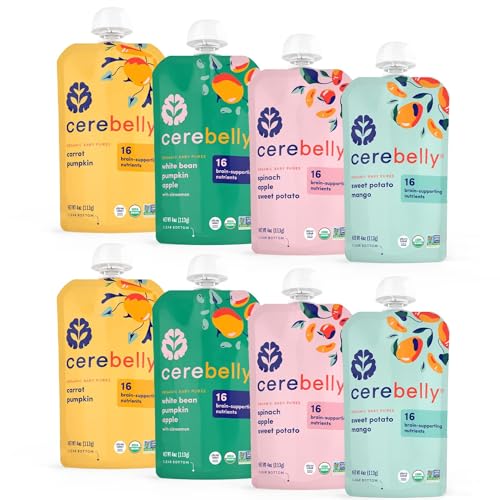You are using an out of date browser. It may not display this or other websites correctly.
You should upgrade or use an alternative browser.
You should upgrade or use an alternative browser.
Which buck looks best? Help me choose
- Thread starter Harbisgirl
- Start date

Help Support Rabbit Talk Forum:
This site may earn a commission from merchant affiliate
links, including eBay, Amazon, and others.
they are both nice, you are going to have to put your hands on them to feel how solid they are in person. I lean toward the first bunny as he looks more full, but it could just be the different hair type that makes it appear to be so. So set them up, run your hand over them. Does your hand dip or close in at all?
Hands down, I'd take the Champagne...and not just because I like one breed better than the other.I'm getting into meat rabbits in the spring. I found a local breeder and she has two bucks available - a Silver Fox and a Champagne d'Argent. Which one would you choose?
If these are for meat breeding, you're probably not overly concerned with fur, but both rabbits seem to have the right amount of silvering and proper coat type for their breeds (although photos of course are not entirely satisfactory for judging that).
The posing is better on the Champagne, but that can tell you something about the rabbit right out of the gate; a structurally correct rabbit is generally easier/more willing to pose naturally.
The most important thing I see is that the Champagne appears to have a distinctly better loin and hindquarter than the SF. The hindquarters are where the most of the meat on a rabbit comes from, with the loin second to that.
For reference, here's what you're looking for - for this Californian junior doe to be perfect, her nice wide loin could be slightly better-filled on the left, but her width carries down to the table very well:

So, I like the Champagne's width of loin, the fullness of his loin and hindquarters, and how he carries this pretty well to the table. It's not straight down at the base, but still pretty good:

Look at the SF and you see what appears to be slight hollow at the loin and a fairly pinched lower hindquarter:


You can see more indication of pinched hindquarters again in the side view of the SF, where not only is his profile undercut, but his hind toes are sticking out. This could be a result of less-than-ideal posing technique, but I've found that toes that want to stick out are pretty hard to conceal and are a good indicator of structural problems. Pinched hindquarters are not only a big negative for meat production, but they can also cause problems for does when they're kindling.

Another indication of meat carriage shows on the topline of the rabbits. While the SF seems to peak early and have a flat spot over his back/loin (see photo above), the Champagne has a properly placed peak, and rounds off nicely over the hindquarters to the table. His hind feet may be tucked a bit too tightly under him, but his toes are not showing, so I would guess this is a subtle posing result rather than a structural issue; looking at the rear view above supports this supposition.

Both rabbits have a slight indentation at the table midway between the fore and hindquarters, which ideally would be a perfectly smooth transition; that's not nearly as important, IMO, as the hindquarters and loin, and again, may have something to do with posing.
I can't see either rabbit's shoulders very well, but in profile they both look like their backs start to rise right from the base of the ears (which is good). The SF doesn't have quite the powerful rise of the Champagne, and may be a touch weak at the shoulder.


Comparing those two photos side-by-side, you can see a difference in both the shoulder strength and the hindquarters of the two animals.
I agree with @ladysown about getting your hands on the rabbits. But overall, the Champagne has the appearance of more power, thickness, and smoothness.
So there's my two cents.
Last edited:
Harbisgirl
Member
Wow, thank you so much for the detailed explanation. I learned so much, thank you! I'm going to print this out LOLHands down, I'd take the Champagne...and not just because I like one breed better than the other.
If these are for meat breeding, you're probably not overly concerned with fur, but both rabbits seem to have the right amount of silvering and proper coat type for their breeds (although photos of course are not entirely satisfactory for judging that).
The posing is better on the Champagne, but that can tell you something about the rabbit right out of the gate; a structurally correct rabbit is generally easier/more willing to pose naturally.
The most important thing I see is that the Champagne appears to have a distinctly better loin and hindquarter than the SF. The hindquarters are where the most of the meat on a rabbit comes from, with the loin second to that.
For reference, here's what you're looking for - for this Californian junior doe to be perfect, her nice wide loin could be slightly better-filled on the left, but her width carries down to the table very well:
View attachment 44636
So, I like the Champagne's width of loin, the fullness of his loin and hindquarters, and how he carries this pretty well to the table. It's not straight down at the base, but still pretty good:
View attachment 44629
Look at the SF and you see what appears to be slight hollow at the loin and a fairly pinched lower hindquarter:
View attachment 44630
View attachment 44631
You can see more indication of pinched hindquarters again in the side view of the SF, where not only is his profile undercut, but his hind toes are sticking out. This could be a result of less-than-ideal posing technique, but I've found that toes that want to stick out are pretty hard to conceal and are a good indicator of structural problems. Pinched hindquarters are not only a big negative for meat production, but they can also cause problems for does when they're kindling.
View attachment 44634
Another indication of meat carriage shows on the topline of the rabbits. While the SF seems to peak early and have a flat spot over his back/loin (see photo above), the Champagne has a properly placed peak, and rounds off nicely over the hindquarters to the table. His hind feet may be tucked a bit too tightly under him, but his toes are not showing, so I would guess this is a subtle posing result rather than a structural issue; looking at the rear view above supports this supposition.
View attachment 44635
Both rabbits have a slight indentation at the table midway between the fore and hindquarters, which ideally would be a perfectly smooth transition; that's not nearly as important, IMO, as the hindquarters and loin, and again, may have something to do with posing.
I can't see either rabbit's shoulders very well, but in profile they both look like their backs start right from the base of the ears (which is good). The SF doesn't have quite the powerful rise of the Champagne, and may be a touch weak at the shoulder.
View attachment 44637 View attachment 44638
Comparing those two photos side-by-side, you can really see the difference in both the shoulder strength and the hindquarters of the two animals.
Overall, the Champagne has the appearance of more power, thickness, and smoothness.
So there's my two cents.
I am glad to help! I've had some breeders and judges spend a lot of time teaching me over the years, and I'm happy to pass it on.Wow, thank you so much for the detailed explanation. I learned so much, thank you! I'm going to print this out LOL
Do remember that everyone has a slightly different view of things, even of the same rabbit on the same day, so my suggestion would be to listen to everyone, store it all away, and make your own decisions. There's really no such thing as a perfect rabbit, so learning to prioritize, and keeping your own goals and preferences in mind, is really useful in the long run. Both rabbits look like nice examples of their breeds, anyway, and none of the negatives are extreme. Also, when I commented on the posing of the two bucks, I was not intending it as a criticism of the person doing the posing. Whomever it was seems to know what he or she is doing; it's just really hard to get a rabbit to stay posed for photos, and like I said, the rabbit itself affects your ability to pose it.
I wanted to add a bit about the hindquarters that I've found extremely helpful in selecting good stock (and not just for meat breeds). The problems with hindquarters can be due to being pinched, or to being narrow. Those sometimes go together, but they are not the same thing. Narrow hindquarters are not desirable, but in my experience they are not as much of a negative as pinched hindquarters.
If you can, flip the rabbit over, resting its head in your elbow and supporting its hind end in your hand, and let it relax so that its feet assume a natural position. (A tense rabbit will pull its feet together and in, so you won't see what you want to see.) If the rabbit isn't tame or used to being handled, make sure you do this over a table in case it flips out of your hands. In this relaxed position, you can tell a lot about the structure that's so important for meat production and for breeding.
Widely spaced, parallel hind feet are what you want to make a good hindquarter. This blue Satin doe has wonderful width and placement:

Narrow hindquarters are what they sound like: the hips are not as broad, and the hind feet are closer together, but still parallel. This chocolate Polish doe is a little narrow, but not at all pinched:

Pinched hindquarters are evidenced by the hind feet forming a V, with the heels closer together than the toes. I am pleased to say that I don't have any examples of that
There's a wide range of pinched-ness, and of course the more dramatic, the worse it is. Sometimes I've found that rabbits have one foot that tends to stick out more than the other. That's not ideal, but it does not seem to be as serious an issue as a full-on pinch. (I still don't keep rabbits like that as breeders.)
Last edited:
Harbisgirl
Member
I am glad to help! I've had some breeders and judges spend a lot of time teaching me over the years, and I'm happy to pass it on.
Do remember that everyone has a slightly different view of things, even of the same rabbit on the same day, so my suggestion would be to listen to everyone, store it all away, and make your own decisions. There's really no such thing as a perfect rabbit, so learning to prioritize, and keeping your own goals and preferences in mind, is really useful in the long run. Both rabbits look like nice examples of their breeds, anyway, and none of the negatives are extreme. Also, when I commented on the posing of the two bucks, I was not intending it as a criticism of the person doing the posing. Whomever it was seems to know what he or she is doing; it's just really hard to get a rabbit to stay posed for photos, and like I said, the rabbit itself affects your ability to pose it.
I wanted to add a bit about the hindquarters that I've found extremely helpful in selecting good stock (and not just for meat breeds). The problems with hindquarters can be due to being pinched, or to being narrow. Those sometimes go together, but they are not the same thing. Narrow hindquarters are not desirable, but in my experience they are not as much of a negative as pinched hindquarters.
If you can, flip the rabbit over, resting its head in your elbow and supporting its hind end in your hand, and let it relax so that its feet assume a natural position. (A tense rabbit will pull its feet together and in, so you won't see what you want to see.) If the rabbit isn't tame or used to being handled, make sure you do this over a table in case it flips out of your hands. In this relaxed position, you can tell a lot about the structure that's so important for meat production and for breeding.
Widely spaced, parallel hind feet are what you want to make a good hindquarter. This blue Satin doe has wonderful width and placement:
View attachment 44639
Narrow hindquarters are what they sound like: the hips are not as broad, and the hind feet are closer together, but still parallel. This chocolate Polish doe is a little narrow, but not at all pinched:
View attachment 44640
Pinched hindquarters are evidenced by the hind feet forming a V, with the heels closer together than the toes. I am pleased to say that I don't have any examples of thatbut you can probably picture it. When you see that V, you know why the toes stick out from under the rabbit when it's posed, and why it's so difficult to pose them without it showing. It's also why rabbits with pinched hindquarters tend to be less smooth over the hips, and look hollower in the loin, since their knees stick out a bit.
There's a wide range of pinched-ness, and of course the more dramatic, the worse it is. Sometimes I've found that rabbits have one foot that tends to stick out more than the other. That's not ideal, but it does not seem to be as serious an issue as a full-on pinch. (I still don't keep rabbits like that as breeders.)
Very good explanation of being 'pinched' thank you. I knew that body conformation was important but this is really interesting, I can see how you could really get obsessed with this.

$49.99
Men's Luxury Rabbit Fur Lined Genuine Butter Soft Black Leather Gloves (LARGE)
Sterling Attire

$8.91 ($8.91 / Count)
$9.91 ($9.91 / Count)
SunGrow Hay Feeder for Rabbits, Hamster, Chinchilla, Indoor Food Dispenser, No Mess Hay Rack Manger for Small Animals, Hanging Alfalfa and Timothy Hay Dispenser, Guinea Pig Cage Accessories, White
LUFFY PETS COLLECTION

$19.41
$27.99
The Fast Metabolism Diet Cookbook: Eat Even More Food and Lose Even More Weight
Amazon.com

$14.63
$29.99
Fit Men Cook: 100+ Meal Prep Recipes for Men and Women―Always #HealthyAF, Never Boring
Amazon.com

$5.66 ($5.66 / Count)
SunGrow Rabbit Grass Mat, Bunny Cage Accessories, Rabbit Stuff and Supplies, Handmade, Edible Accessory Chew, Keep in Cage or on Floor, 1 pc
LUFFY PETS COLLECTION

$7.64
$10.99
Itopupi Ear Muffs for Winter Women & Men, Faux Fur Women's Earmuffs Winter, White Earmuffs for Women Winter Sports
hanhuamaoyi

$14.20
$24.00
Top Secret Restaurant Recipes: Creating Kitchen Clones from America's Favorite Restaurant Chains: A Cookbook
travis_textbooks

$31.29 ($7.82 / lb)
Manna Pro Milk Replacer with Probiotics for Goat Kids | Supports Gut Health and Digestion | 4lbs
Amazon.com

$19.20 ($0.44 / Ounce)
Pumpkin Tree Peter Rabbit Organics, Banana, Mango, and Kale, 4 Squeeze Pouch, Mango, Broccoli & Kale, 4.4 Ounce (Pack of 10)
Amazon.com

$12.64 ($0.10 / Ounce)
$14.84 ($0.12 / Ounce)
Himalayan Nature 100% Authentic Himalayan Pink Salt Chunks, 10 LBS, Animal Feed Salt Block, Plastic Bag of Salt Chunks for Deer, Horse & Animals, Pack of 1
Amazon.com

$19.79
$35.95
Complete Guide To Fasting: Heal Your Body Through Intermittent, Alternate-Day, and Extended Fasting
Amazon.com

$23.74
$45.99
FITORY Womens Open Toe Slipper with Cozy Lining,Faux Rabbit Fur Cork Slide Sandals Black Size 10
FITORY-SHOES

$11.99 ($6.00 / Count)
$13.99 ($7.00 / Count)
JarThenaAMCS 2Pcs Rabbit Hay Feeder Bag with 2 Holes Mushroom Guinea Pig Hanging Hay Feeding Bag Storage Dispenser for Chinchilla Hamster Bunny Small Animal Pet
JINGTU HOME

$2.99 ($3.19 / lb)
Kaytee Alfalfa Cubes for Rabbits, Guinea Pigs, and Other Small Animals, 15 oz
Amazon.com

$9.99
The Lodge Cast Iron Cookbook: A Treasury of Timeless, Delicious Recipes
Amazon.com Services LLC

$7.65 ($0.10 / Ounce)
$10.99 ($0.14 / Ounce)
Himalayan Nature 100% Natural Himalayan Rock Deer Salt Block - Animal Licking Mineral Salt Block, Natural Feed Salt Block, 5 Lbs, 2x4x8 inch, Pack of 1
Amazon.com

$58.00 ($0.14 / Ounce)
Wakefield Extra Large Virginia Peanuts for Animals, 25 LBS
Monroe Systems for Business










































